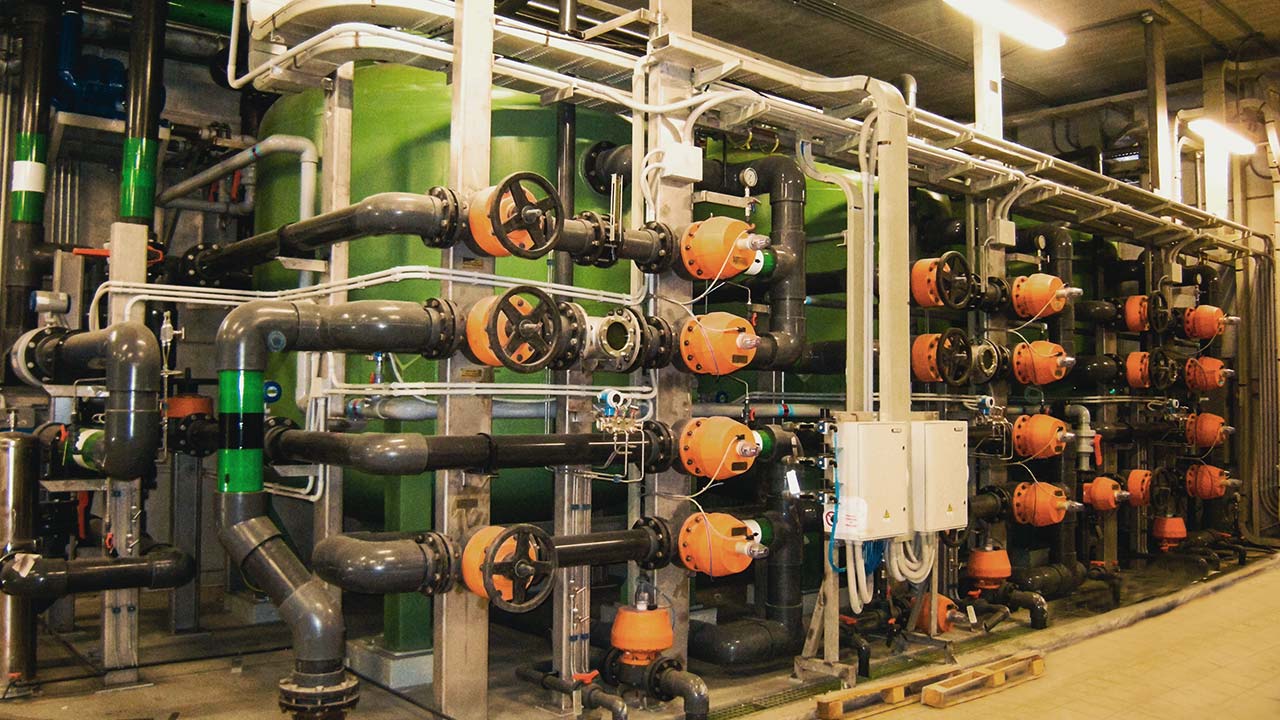
Water Softening Plant
Softening systems take action to reduce water hardness and prevent limestone deposits in pipes.
By reducing the presence of calcium, the resulting fouling , whether organic or inorganic, can be avoided , excluding obstruction of passage sections and maintaining theoptimal functionality of industrial plants and related equipment.
This takes place in a continuous cycle, according to which the flow passes over the bed of resins and is subjected to chemical exchange.
The treatment includes an automatic regeneration of the resins, which takes place with a solution of water and sodium chloride, which restores the conditions that enable their softening functionality.

How a Water Softening Plant Works
Thewater softening plant can include one or more lines, according to which its use is programmed, depending on the demand for supply.
If there are multiple lines, it is possible to ensure that the production cycle is continuously supplied with treated water suitable for processing.
Theautomation of Coind water softening systems allows the entire process to be monitored and based on the data emerging from the system, calibrate resin cycles and consumption, and reduce maintenance costs accordingly.
Peculiarities
- Continuous delivery with multi-line system
- Consumption under control
Materials
- From carbon steel with epoxy cycle treatment to stainless steel
- Protective coatings in epox, hot-dip galvanizing, or enamel
The filters, in turn, must be compared to the service conditions that may be configured: feed water to a civilian dwelling or feed water for a plant boiler.
In the former case, these are small devices with a few liters of resin; in the latter, they are large steel filters operated by complex automatic valve systems.
Coind's Production of Water Softening Equipment
Standard serial line that makes use of fiberglass tanks with inner lining.
Regarding filter regeneration, we are in line with legal requirements that require regeneration every four days, with associated automatic disinfection of the filter bed.
The industrial production line involves steel tanks plasticized internally and operated with pneumatic valves.
In case of continuous service, two battery filters can be provided, one of which is in service and the second in standby.
Indomestic use, brine tanks consist of small polyethylene tanks or large stainless steel tanks capable of storing dry salt for many days and/or weeks of service.
Reference is always made to food water of drinking quality.
If the water carries undesirable molecules of iron, manganese, organic substances, sand, hydrogen sulfide and/or other substances excluded from the drinking water classification, it will be necessary to intervene beforehand with suitable treatments to bring it back to the desired potable condition.
As far asindustrial use is concerned, in the presence of relevant concentrations of bicarbonate hardness, it may be convenient to replace softening filtration with filtration suitable for preemptively decarbonating the water; an operation followed by degassing and softening.
The quality of water produced will be considerably higher than that made available by softening alone.
